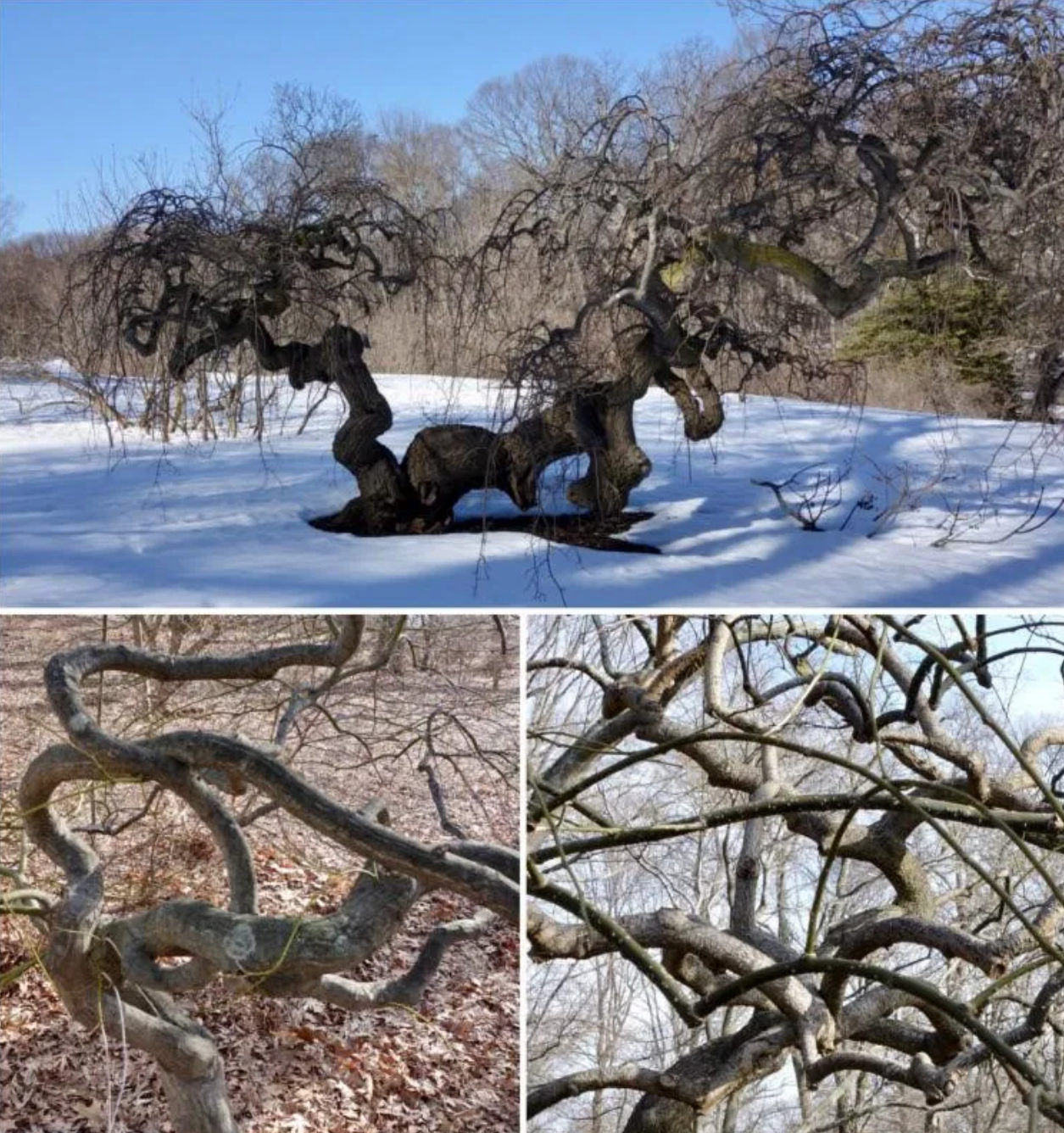With snow still on the ground, but temperatures rising fast, last Monday I came upon the gnarled and pendulous cultivar of the white mulberry (Morus alba ‘pendula’ 5165*A) on Bussey Hill – acquired by the Arnold Arboretum in 1903. It appeared as some sort of sea serpent (well, snow serpent in this case) emerging from the lower depths. As a follow-up, I decided to scout some of the other wonderful “pendula” or “tortuosa” forms of trees (all of them ultimately derived from natural genetic mutations) on the grounds, especially those with gnarled, twisted, knotted tangles of branches. Two favorites are a small Japanese maple (Acer palmatum ‘dissectum’ 146-68*A; bottom left) along Meadow Road and a weeping Japanese pagoda tree (Styphnolobium japonicum ‘pendula’ 493-67*A; bottom right) in the legume collection.

A common feature of many of these dwarfed and oddly shaped trees is that as lead branches droop and become arched, a new leader is initiated from a lateral bud near the top of the curve, creating a cascading effect. But, why some forms of trees with pendulous branches are more gnarled and twisted than others (for example, the magnificent parasol European beech, Fagus sylvatica ‘tortuosa’ 14599*A or the weeping Japanese snowbell, Styrax japonica ‘carillon’ 503-82*A near the bonsai pavilion) is a mystery worth pondering.
To find Arnold Arboretum trees that defy the standard rules of growing skyward, go to Arboretum Explorer (click here) and perform a search with “tortuosa” or “pendula.” You will find there are more than a hundred such trees on the grounds, and each one is worth visiting for the defiantly nonconformist sculptural beauty on display.